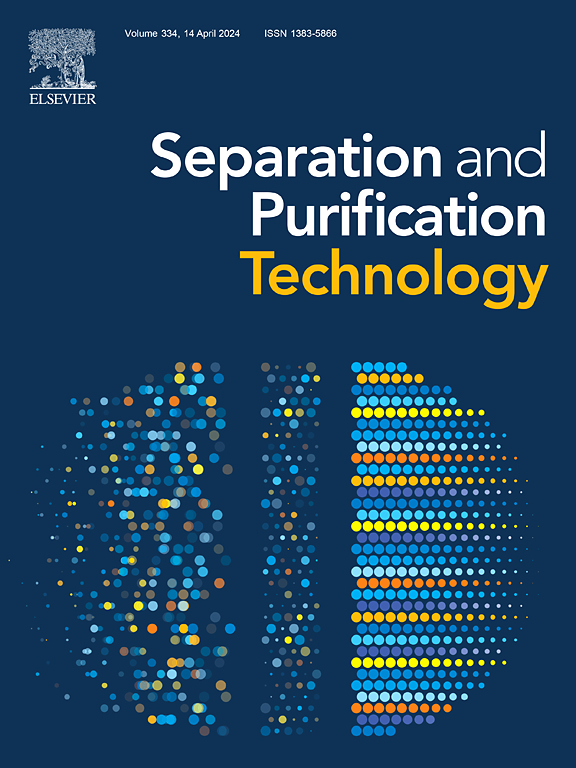Metal-organic framework membranes for lithium extraction from Mg/Li brines: Advances in design, machine learning-driven optimization, and scalability challenges
IF 9
1区 工程技术
Q1 ENGINEERING, CHEMICAL
引用次数: 0
Abstract
Lithium extraction from high Mg/Li ratio salt-lake brines remains a critical challenge due to the inherent trade-off between membrane permeability and selectivity. Traditional nanofiltration membranes struggle to achieve efficient separation of Li+ and Mg2+, particularly in harsh saline environments. This review highlights the transformative potential of metal–organic framework (MOF)-based membranes, which leverage tunable pore sizes, functionalized surfaces, and synergistic separation mechanisms (e.g., size exclusion, electrostatic repulsion) to overcome these limitations. We systematically analyze MOF synthesis strategies, membrane design principles, and machine learning-driven material screening to optimize performance. Innovations such as sub-nanometer pore engineering, hybrid organic–inorganic architectures, and stability-enhancing modifications are emphasized. Furthermore, we discuss the integration of computational tools and high-throughput simulations to accelerate the discovery of high-performance membranes. Despite progress, challenges in scalability, long-term stability, and industrial adaptability persist, underscoring the need for interdisciplinary approaches to bridge laboratory advancements with real-world applications.


从Mg/Li盐水中提取锂的金属有机框架膜:设计进展、机器学习驱动的优化和可扩展性挑战
由于膜渗透性和选择性之间的固有权衡,从高镁/锂比盐湖卤水中提取锂仍然是一项严峻的挑战。传统的纳滤膜难以实现 Li+ 和 Mg2+ 的高效分离,尤其是在恶劣的盐碱环境中。本综述强调了基于金属有机框架(MOF)的膜的变革潜力,它利用可调孔径、功能化表面和协同分离机制(如尺寸排斥、静电排斥)来克服这些限制。我们系统分析了 MOF 合成策略、膜设计原理和机器学习驱动的材料筛选,以优化性能。我们强调了亚纳米孔隙工程、有机-无机混合架构和稳定性增强改性等创新。此外,我们还讨论了计算工具与高通量模拟的整合,以加速高性能膜的发现。尽管取得了进展,但可扩展性、长期稳定性和工业适应性方面的挑战依然存在,这凸显了跨学科方法在实验室进展与实际应用之间架起桥梁的必要性。
本文章由计算机程序翻译,如有差异,请以英文原文为准。
求助全文
约1分钟内获得全文
求助全文
来源期刊

Separation and Purification Technology
工程技术-工程:化工
CiteScore
14.00
自引率
12.80%
发文量
2347
审稿时长
43 days
期刊介绍:
Separation and Purification Technology is a premier journal committed to sharing innovative methods for separation and purification in chemical and environmental engineering, encompassing both homogeneous solutions and heterogeneous mixtures. Our scope includes the separation and/or purification of liquids, vapors, and gases, as well as carbon capture and separation techniques. However, it's important to note that methods solely intended for analytical purposes are not within the scope of the journal. Additionally, disciplines such as soil science, polymer science, and metallurgy fall outside the purview of Separation and Purification Technology. Join us in advancing the field of separation and purification methods for sustainable solutions in chemical and environmental engineering.
 求助内容:
求助内容: 应助结果提醒方式:
应助结果提醒方式:


